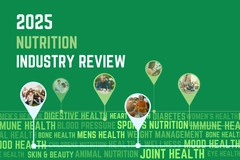
- Industry news
Industry news
- Category news
- Reports
- Key trends
- Multimedia
Multimedia
- Journal
- Events
- Suppliers
Suppliers
- Home
- Industry news
Industry news
- Category news
- Reports
- Key trends
- Multimedia
Multimedia
- Events
- Suppliers
Suppliers
Redefining “healthy”: FDA proposes front-of-pack labeling system to support nutritious diets

29 Sep 2022 --- The US Food and Drug Administration (FDA) has proposed an updated definition of products labeled as “healthy” and a deeper insight into nutrient content. The agency also wants product labels to be consistent with federal dietary guidelines and nutrition science to help consumers make more informed purchasing decisions.
“Food package labels may help empower people, including those with lower nutrition knowledge, with information to identify foods that will help them build healthy eating patterns,” says the FDA.
“Diet-related chronic diseases, such as cardiovascular disease and Type 2 diabetes (T2D), are the leading causes of death and disability in the US and disproportionately impact racial and ethnic minority groups,” says Robert Califf, commissioner at the FDA.
Planned actions
The FDA plans to develop a front-of-package labeling system to quickly and easily communicate the information to consumers. The agency will continue working on its sodium reduction targets which started last year.
Additionally, education will be promoted as a way for parents and caregivers to ensure they are aware of healthy eating recommendations, exposing toxic elements in foods.
The proposal of an updated definition would better account for how several nutrients of various foods go together and work synergistically to provide a healthier diet pattern and lead to improved health, notes the FDA.
The epidemic of chronic diseases Currently, 90% of Americans are exceeding the recommended daily sodium limit (Credit: The FDA).
Currently, 90% of Americans are exceeding the recommended daily sodium limit (Credit: The FDA).
Eating a varied diet including fruits, vegetables, whole grains and lower-fat dairy has shown a reduced risk of cardiovascular disease, some types of cancer, T2D and obesity.
“Today’s action is an important step toward accomplishing several nutrition-related priorities, which include empowering consumers with information to choose healthier diets and establishing healthy eating habits early. It can also result in a healthier food supply,” Califf underscores.
“Providing informative and accessible food labeling empowers consumers and may help foster a healthier food supply for all if some manufacturers include more fruits, vegetables, dairy and whole grains and limit saturated fat, sodium and added sugars in their products to qualify to use the updated claim,” the FDA stresses.
Aligning with science
The Dietary Guidelines for Americans 2020-2025, the updated Nutrition Facts label and current nutrition science are the proposed framework’s building blocks. This framework aims to ensure nutrition density in foods and help consumers follow a healthy diet.
“For example, to include ‘healthy’ claims on the package, a cereal would need to contain a certain amount of whole grains and adhere to saturated fat, sodium and added sugars limits,” notes the FDA.
“Nuts and seeds, higher fat fish, such as salmon, certain oils and water are foods that cannot currently be labeled as ‘healthy’ but are part of a healthy dietary pattern and would qualify to bear the label under the proposed definition announced today.”
The agency underscores that they are currently searching for a symbol that manufacturers can use on their packaging.
“Healthy” has changed since 1994 The agency wants to educate parents and caregivers to ensure they have knowledge on healthy foods.
The agency wants to educate parents and caregivers to ensure they have knowledge on healthy foods.
The current definition of “healthy” includes limits on saturated fat levels, total fat, cholesterol and sodium. To qualify as “healthy,” foods must provide at least 10% of the daily value of vitamin A, C, calcium, protein, fiber or iron, according to the FDA.
These current guidelines were set in 1994, meaning that the field of nutritional science has expanded and changed. Additionally, the food industry has changed as well. Ultra-processed foods were spotlighted as “falling short on nutrition policies” by the World Health Organization.
Previous research showed that artificial flavors, colors and ingredients may have adverse effects on the instinctive choice of foods. The study evidenced that human nutritional wisdom – humans being selective in their food choices based on nutritional needs – may get confused by the lack of nutrients in today’s foods.
“Nutrition is key to improving our nation’s health,” adds Xavier Becerra, assistant secretary at the department of health and human services.
“Healthy food can lower our risk for chronic disease. But too many people may not know what constitutes healthy food. FDA’s move will help educate more Americans to improve health outcomes, tackle health disparities and save lives.”
By Beatrice Wihlander











